Adi Avidani is an Israeli artist and designer based in the UK. Fascinated by the clear connection she finds between clay and people, Adi uses clay to portray human relations. You can usually find her working on her pieces in the studio, around the clock. She has been exhibiting her work in galleries in the UK and Europe.
Adi is currently working on a collection of chains and knots, shedding light on the essence of human relationships; our connections, limitations, desires, temptations, and dreams. She also strives to accentuate the contrasting nature of chains, an object often associated with imprisonment - and how it also evokes a strong sense of security and consistency. Most of Adi's inspiration comes from her early life in Jerusalem, and the contrast of living in a loving warm home, on such conflicted grounds.
With a background in special education (MEd in Special and Inclusive Education from UCL) and a strong belief in the invaluable impact of art on our daily lives, Adi decided to found the inclusive Cambridge Art Club where she teaches children to express their creativity and develop artistic skills.
For the past year, Adi has been working in the Kiln Cambridge Studio as a freelance ceramist, while also indulging in life sculpting masterclasses. The studio is home to various freelance artists, forming a creative community that greatly contributes to Adi's inspiration. Lately, Adi's works revolve around coloring her clay to achieve a specific tone. She mainly hand builds and works with stoneware and the extruder.
In this exclusive interview, we speak with Adi Avidani about her obsession with links and chains, which can be found throughout her extensive body of work. Using clay, Adi meditatively and repetitively hand-creates every link and knot—a form that simultaneously binds and constrains, connects and secures. In this interview, the artist discusses what continues to draw her to this shape as well as the small, day-to-day details and differences between her upbringing in Israel and her current life in the UK that inspire her.
www.adiavidani.com
IG: @adi_avidani_ceramics
Twitter: @AdiAvidani

When did you begin creating with clay and what compels you to use it as your primary medium?
I began working with clay about five years ago. I had just moved from Israel to Cambridge, still adapting to the new city, and basically waited for months to be inspired and create. A local friend sent me a flyer about a new studio that was opening—Kiln Cambridge. And the moment I saw it, it’s like something clicked—love at first sight. I knew this is it.
I took courses for a year, and started creating by myself pretty quickly while still learning from other creators at the studio, workshops, and books. The thing about clay is that it allows my mind and body to be present— when I touch clay, I am in the moment completely. I stay in my zen even if it all goes wrong (which happens a lot). I think I started meditating without noticing, which made me so relaxed and focused on creation. Clay is known to be very therapeutic, and I think at that point in my life it was the thing I needed.
As a child, I always enjoyed touching everything, which lead me to observe objects, imagine how they would feel, and then experiment. I think the same goes with clay—I try to gauge how it will move and I enjoy testing its boundaries.
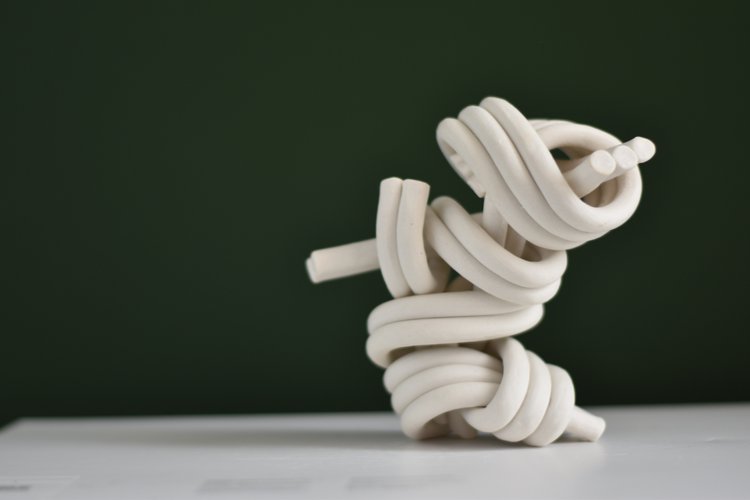
I love the emphasis on knots and links in your work. What draws you to this subject aesthetically as a shape, and conceptually as something that binds/connects?
Thank you for that, I really appreciate your input and thoughts on my work. In my work “Of Human Bondage,” I strive to accentuate the contrasting nature of chains, an object often associated with imprisonment that also evokes a strong sense of security and consistency.
Most of my inspiration comes from my early life in Jerusalem, and the contrast of living in a warm loving home, on such conflicted grounds. The knots and chains are directly linked (I can’t help it haha) to my move to the UK, and living far away from everything I ever knew. I was thinking a lot about my hometown, and every visit to Israel became an inspirational one. I started noticing the little things I always loved in a more artistic and critical way—looking at the rocks and the way my parents drink their coffee. I felt like I myself was living in the most beautiful city in the world, where you can read a book by the lake with birds resting beside you while my family and friends could be in a state of war (specifically in Jerusalem). This extreme contrast made me feel both guilty and lucky, and most importantly, curious about what it makes me feel.
I felt like I was imprisoned to my feelings and the city I truly call home: Jerusalem. At the same time, I felt free and capable and inspired. This is what I believe is reflected in the chains. The knots are the micro point of view of this notion—they embody the direct relationships we have with one another. The first ever knot someone ordered was a tai-knot, made from three extruded coils, for three individuals who are all in one loving relationship. It made me the happiest person in the world as I realized people see and feel the visual representation I am working towards.
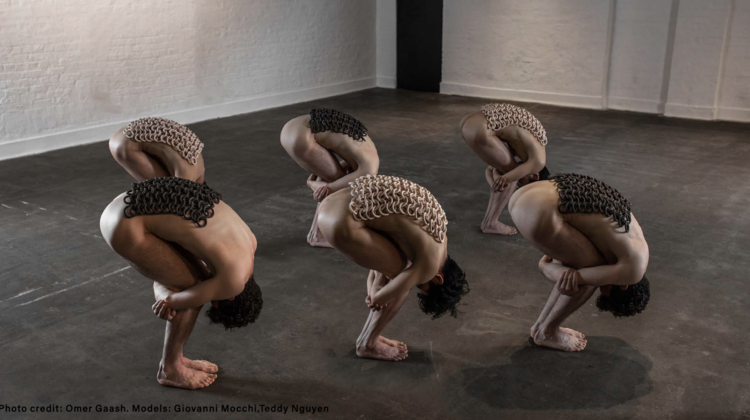
Can you talk a bit about the connection you find between clay and people?
I think the answer to this is in the pieces and work we create. For me, clay represents an infinity of forms, as it’s a material that you can always recycle—up until the firing state. Once you fire it, it is what it is. Having a will of its own (much like people), clay pushes me to my personal limit, but at a time. We can all throw on the wheel the same amount of ball clay, and create the same shape and glaze it in the same way, but it won’t turn out the same.
What inspires your art the most? What do you do and/or where do you go if you need some inspiration?
In big words: people, hopes, fears, and passions. In my life: my relationship with my partner and my family, and other special individuals; Jerusalem, rocks, rocks, and more rocks, wildflowers, Hebrew poems and Italian literature.
All of that and quiet Friday afternoons, just before dinner when the house is in complete serenity. I also find great inspiration in the people I work with, fellow ceramicists or artists I’ve collaborated with. I think all of the above are mostly things I find beautiful in my world, they bring me joy or pain, and this is what I believe inspires me.
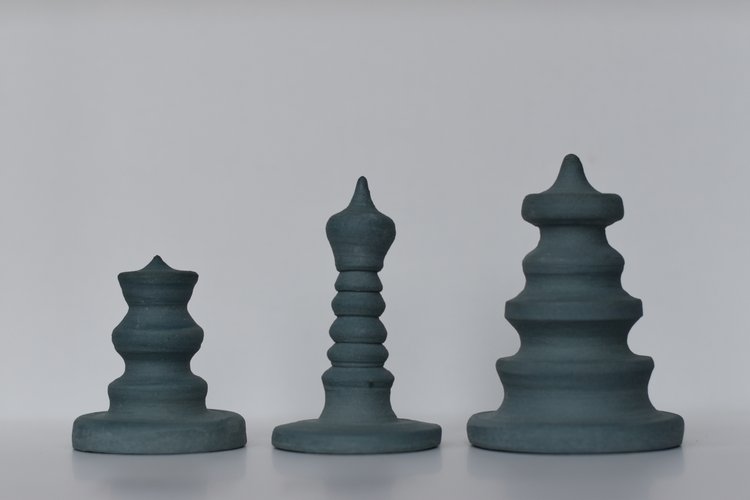
What initially brought you to London from Israel? How have you experienced the art community there?
I think the main thing that brought us to London is curiosity. I was super eager to give myself the chance of really trying to make it, in the sense that London has SO MUCH to offer to artists. It was a decision I am very happy about, as it gave me the confirmation I needed, and the appetite to know and learn more.
I feel that I can’t quite yet point out the main differences between London and Israel, since my artistic practice started in London. However, I do feel that London is completely different from Israel in its variety of artists and opportunities (in Israel, the main art scene is in Tel Aviv and you get to know almost everyone within just a couple of years).
I feel that I needed the time away from Israel to feel comfortable creating. It didn’t come to that in Israel, perhaps because I wasn’t ready yet, or perhaps I needed to see everything from a different perspective. I am extremely curious to see how my work will be implemented in my community.
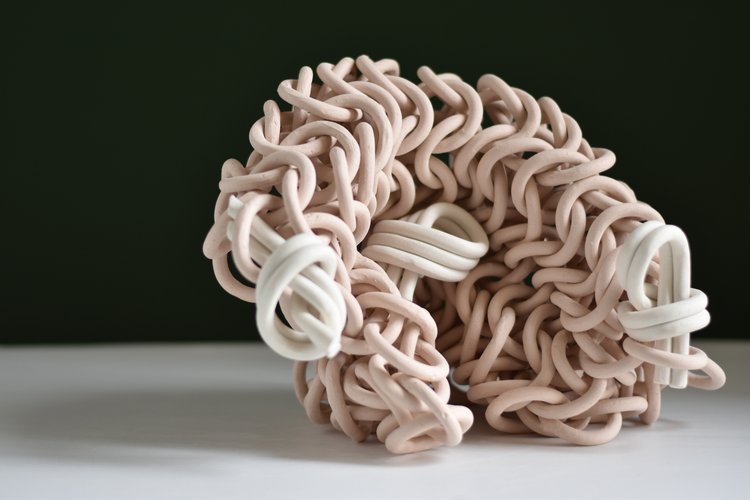
If you could have a two-person show with any artist (living or not), who would it be and why?
Hard question. I would go for Yayoi Kussama. I feel that I get her drive for repetitive work, and how her art acts as her sanctuary. I admire her fight to create and the price she had to pay for it. I would really like for my next solo exhibition to be an immersive one like her infinity rooms, and other later work.
What are you reading and/or listening to right now?
I just finished reading Elena Ferrante’s “The Lying Life of Adults”. I am a freak of her work. I have, however, read too much Netflix subtitles recently. :) Not judging.
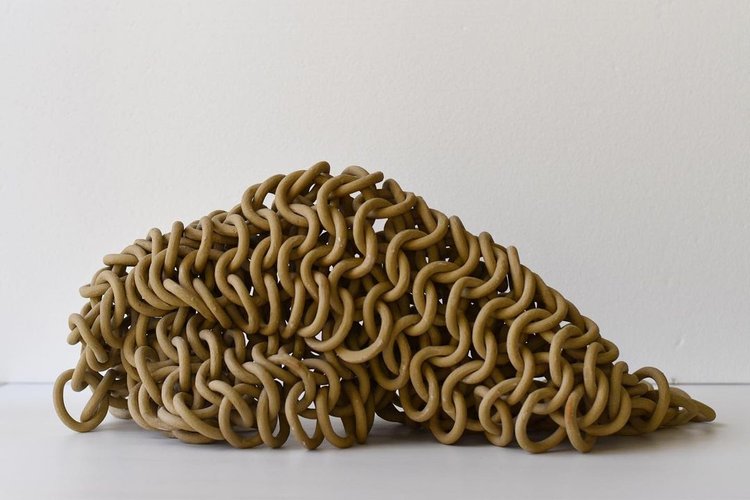
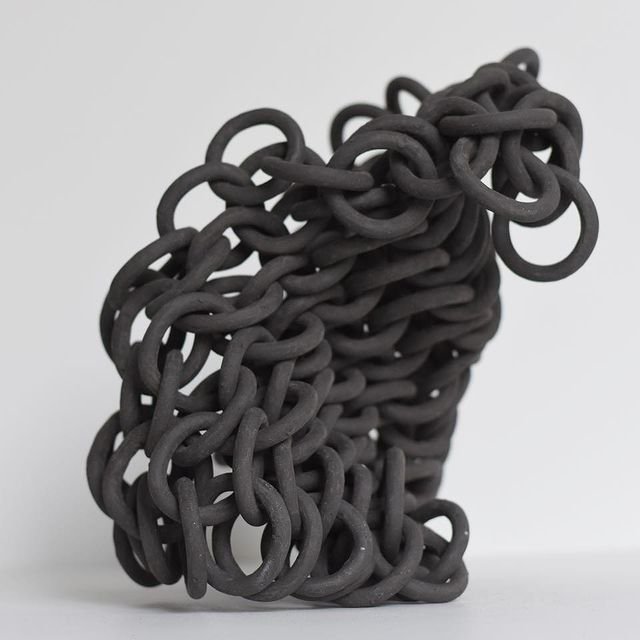

.jpeg)












